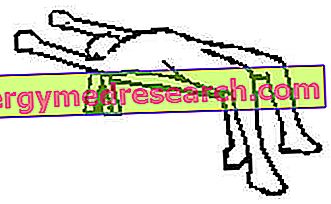By Dr. Antonio Parolisi
Considerations on choosing a good exercise for the back muscles
In a classic card for back muscle training, we will hardly find a traction exercise like the one at the "Lat machine".
In all the movements that allow us to "pull" the weight of the body upwards, as in sport climbing, or a bar towards the body, as in the case of the Lat machine, the muscles involved will be in order of intervention, respectively : Large Dorsal, Large Pectoral, Large Round, Posterior Deltoid, Rhomboids, Middle and Lower Trapezium, Biceps Brachialis, Brachialis and Brachioradialis, in addition to the prehensile muscles of the hand; it should also be remembered that, due to the anterior closure chain, the abdominal and flexor muscles of the hip will also be involved. These muscles will be recruited by the innate instinct to create a fixed point with the lower limbs to have greater traction force.
This involvement of the hip flexors is particularly noticeable in the Lat machine traction (Pull-down): when the set has come almost to the end and the energies are very few, we observe an instinctive lifting of the feet from the ground and a collection of the knees towards the chest. This happens not necessarily because the load is high, but to look for something to which to bind and make a fixed point; and this is one of the reasons why, for a profitable backbone training with this exercise, it becomes almost established, except in some cases, to remove the knee cushions from the machine. With this arrangement the involvement of the hip flexors, which would intervene markedly in the action of traction downwards, is avoided.
One way to understand what is exposed is to make a set of Lat machines with the knees locked and then do another, always with the same load, with the knees free from the cushions. In the second case the exercise will be much more difficult precisely because we lacked the involvement of the Ileo-psoas and of the Rectum of the femur, the two most powerful hip flexors that intervene in the movement making a fixed point.
The use of the cushions could possibly have a value in the case in which there is a problem of lumbar hypolordosis or a cancellation of the curve. In this situation it is in fact probable that there is a weakness in the ileo-psoas, which could therefore be reinforced using cushions. This hypothesis would in any case be assessed on the basis of the subject in question. To recreate the physiological lumbar lordosis, you could also position your legs not in a sitting position, but as if you wanted to take a kneeling position. In this position the hip flexors would be stretched, recreating a normal curve in the column.
The exercise of the Pull-up, or free traction at the dock, puts a strain on the strength of those who practice it, in fact in many sectors, such as the military, it is used to assess the efficiency in terms of strength of those who undergo exercise.
Raising your body weight for 10-15 repetitions means having an important strength in the muscles of the back and all the accessory muscles that work on that movement. Unfortunately, as always, not all the exercises are exempt from having problems and as usual we must "virtually" make a small reference to these movements that make the back muscles work, with particular reference to the pull-ups or the Lat machine.
Hardly a neophyte will have the ability to lift the weight of his body to a bar for more than 4-7 repetitions (but there are always exceptions) and this is why the Lat machine (at least the consistency of the choice of this exercise should be this).
In the lat machine, the fixed lever point changes with respect to the pull-up, but otherwise the muscles involved are more or less the same. For this reason, this exercise is particularly useful for increasing strength in the early stages of physical preparation.
In the pull-ups the hands are fixed at the top and the cover is pulled upwards, while in the pull-down the body is fixed and the hands are pulled downwards.
These are really noteworthy exercises, first of all because they are multiarticular activators, but above all because of the massive muscular effort that derives from them; but unfortunately the question is always the same !!!
How can I tell if this exercise is suitable for a subject or not?
The answer, now, is always the same! I have to test the flexibility and the possibility of movement of that person.
Ultimately I have to evaluate its Range of Motion (ROM) for that given exercise.
The flexibility tests are once again the key to the planning in the field a profitable and safe training, or at least to minimize the risks derived from the exercises.

Fig1 The subject enjoys good flexibility
of the shoulder without creating compensation at the lumbar level
In the case of fig1 the subject in question does not show obvious problems of poor flexibility at shoulder level, in fact he can easily carry his arms in extension without compensation; therefore this argues in favor of the fact that he can practice the Lat Machine in complete tranquility, considering only the type of training that he intends to practice with reference to the objectives of growth, strength or other conditioning skills.
CONTINUE: Part Two »



